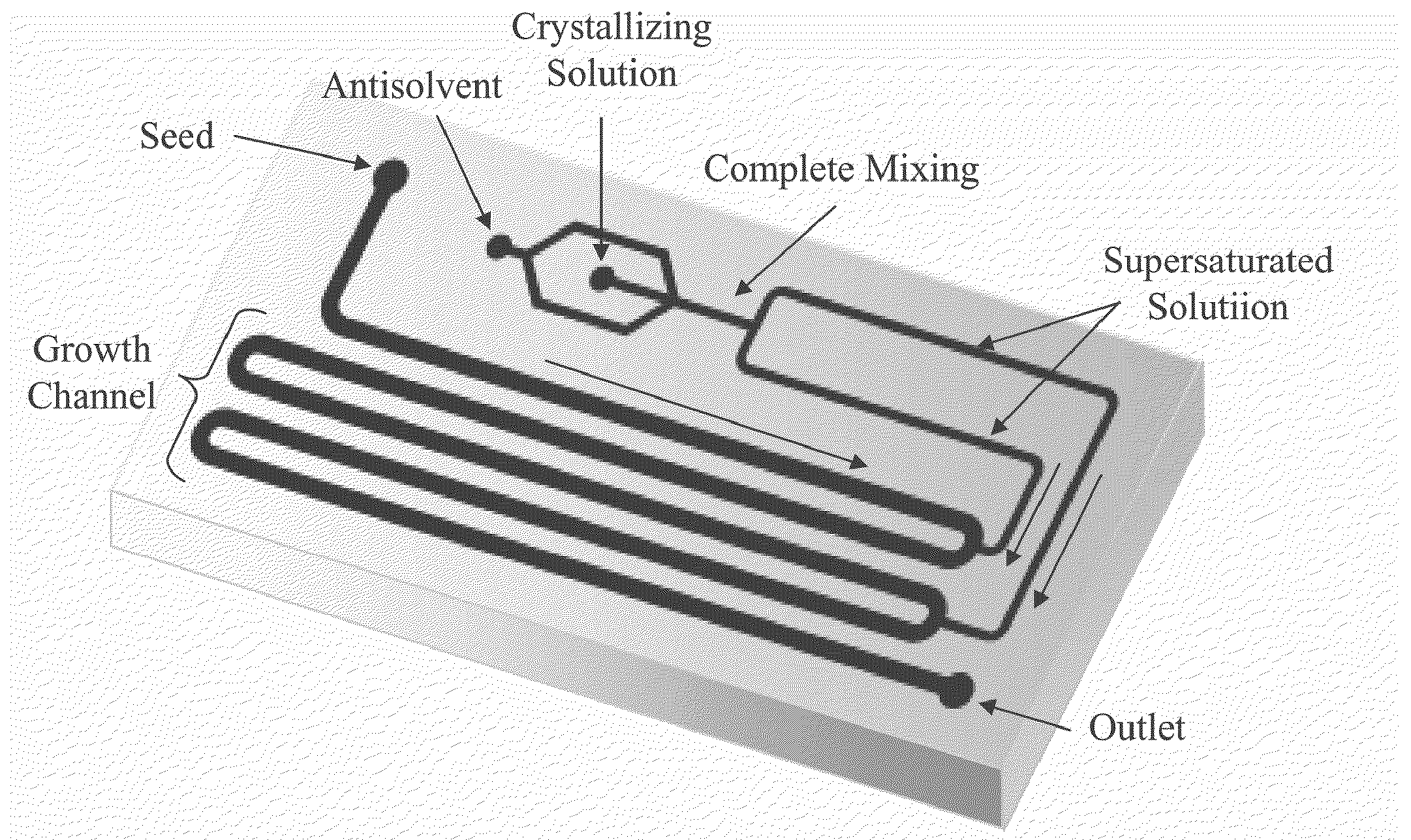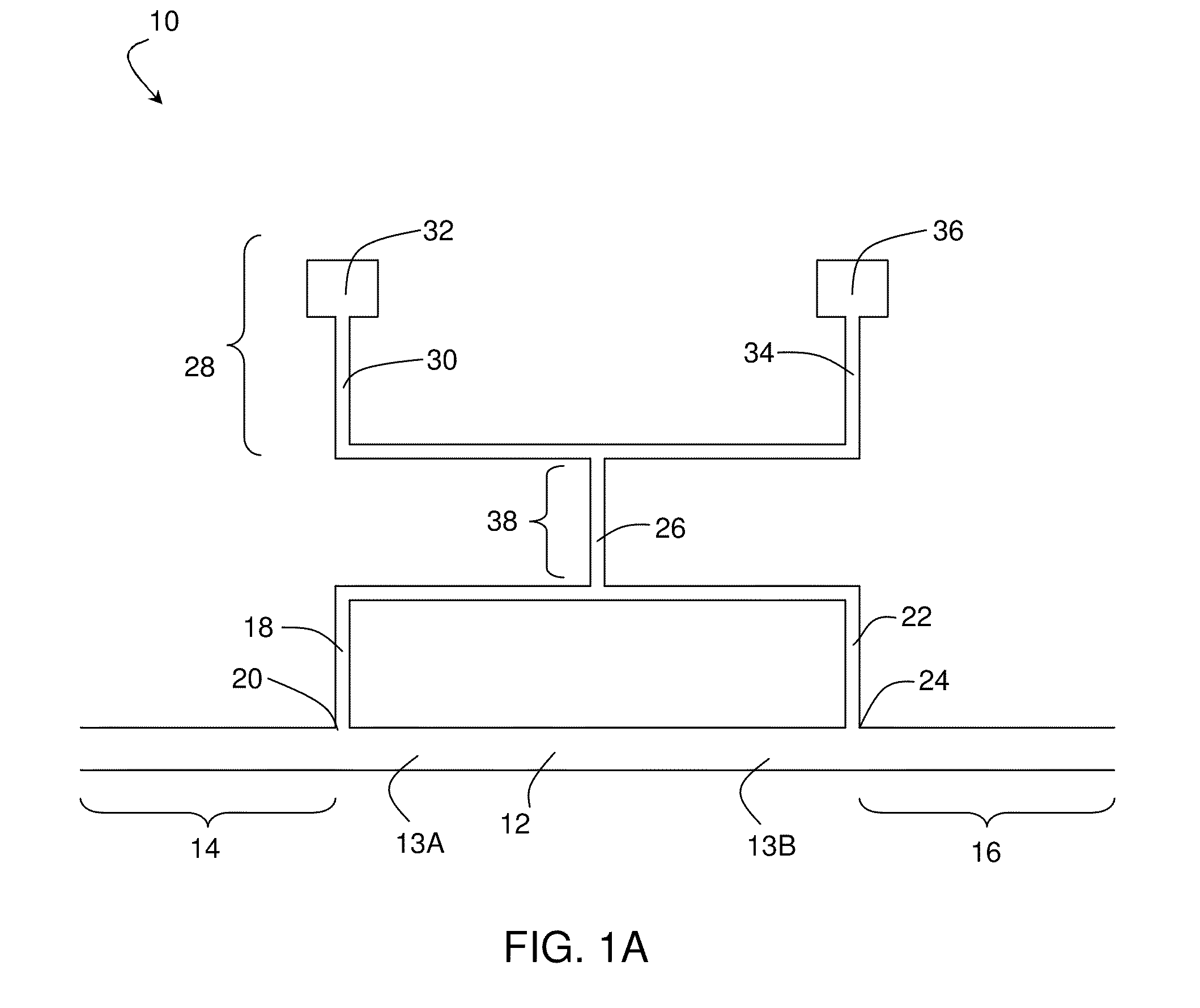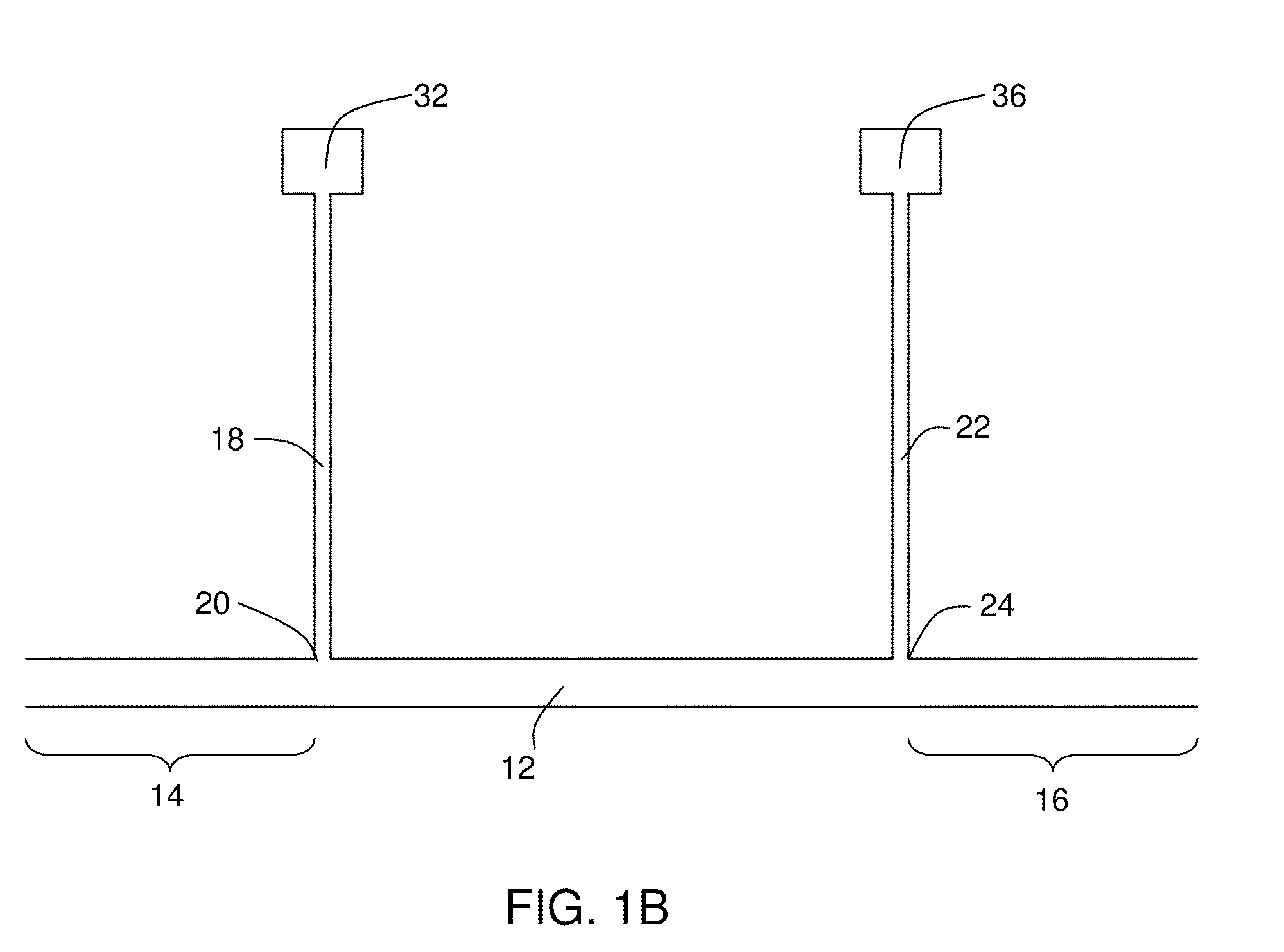Systems and methods for microfluidic crystallization
a microfluidic and crystallization technology, applied in the field of crystallization in microfluidic systems, can solve the problems of reducing the reproducibility of the crystallization process, and increasing the difficulty in obtaining accurate kinetic data
- Summary
- Abstract
- Description
- Claims
- Application Information
AI Technical Summary
Problems solved by technology
Method used
Image
Examples
example 1
[0071]This example describes crystallization of glycine, according to one set of embodiments. The three most common polymorphs of glycine—gamma, alpha and beta—are shown in FIG. 6. Seeds of each of the three glycine polymorphs were introduced into the reactor in separate experiments, and their growth rates were calculated. In this example, seeded crystallization was used to eliminate uncontrolled nucleation. FIG. 7 includes a schematic illustration of the reactor used in this example. In one inlet, a feed of saturated aqueous glycine seeds was delivered at 10 microliters / min to the microfluidic device at room temperature. Via another inlet, a 40% saturated aqueous glycine solution was fed to the device. In a third inlet, an antisolvent of pure ethanol was fed to the device. The antisolvent and the 40% saturated aqueous glycine solution were mixed on chip to generate a supersaturated solution of glycine. The supersaturated glycine solution was subsequently added to the primary fluidi...
example 2
[0074]In this example, simulations were performed to study the transport of fluid and crystal precursor within a microfluidic channel. FIG. 9 illustrates the fluid velocity profile of a primary fluidic stream mixed with a side-stream. The velocity profile of this aqueous solution was simulated using FEMLAB, a multiphysics modeling and analysis software. FIG. 10 includes calculations of supersaturation as a function of cross-sectional position at various points along the length of the channel. As seen from the plot, substantially uniform supersaturation is achieved 12 mm from the point of mixing. This corresponds to a time of approximately 5 seconds, or about 3.4% of the length of the channel over which growth occurs in this example. The short mixing time was much smaller than the dispersion inherent in the crystal growth process, which is in the order of about 30% for organic crystals, as shown in L. Li, et al., Growth kinetics and mechanim of glycine crystals. Journal of Crystal Gr...
PUM
| Property | Measurement | Unit |
|---|---|---|
| size | aaaaa | aaaaa |
| size | aaaaa | aaaaa |
| size | aaaaa | aaaaa |
Abstract
Description
Claims
Application Information
 Login to View More
Login to View More - R&D
- Intellectual Property
- Life Sciences
- Materials
- Tech Scout
- Unparalleled Data Quality
- Higher Quality Content
- 60% Fewer Hallucinations
Browse by: Latest US Patents, China's latest patents, Technical Efficacy Thesaurus, Application Domain, Technology Topic, Popular Technical Reports.
© 2025 PatSnap. All rights reserved.Legal|Privacy policy|Modern Slavery Act Transparency Statement|Sitemap|About US| Contact US: help@patsnap.com



